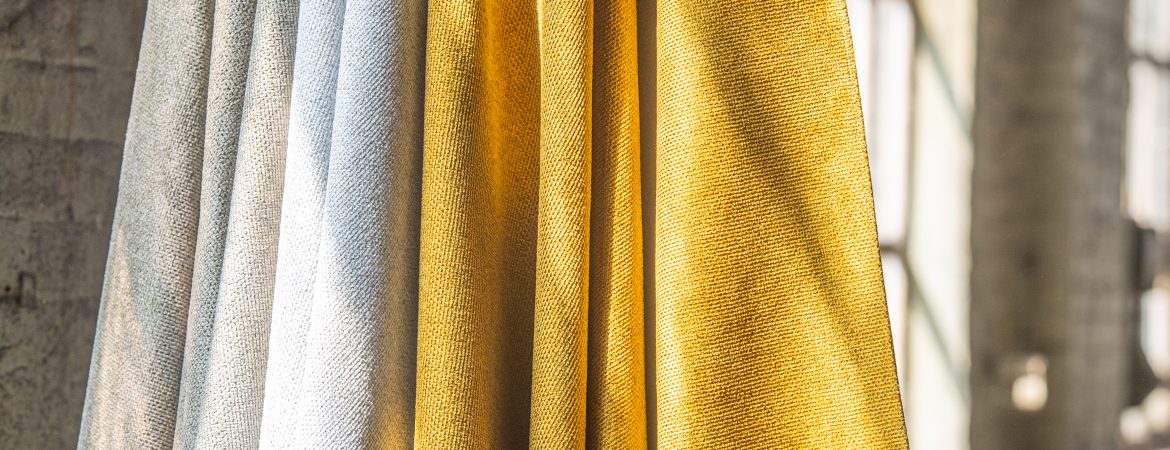
Sustainable upholstery fabrics thanks to supply chain transparency
Fabrics with a Conscience – that is characteristic of Fabraa. Our range uses raw materials that would otherwise pollute the world but now get a second life as high-quality sustainable upholstery fabrics. And the best part? Our fabrics come with a price tag that won’t deter your customers. For us, sustainability goes hand in hand with affordability, because real change can only happen if it is accessible to everyone.
Transparent production of sustainable fabrics
In the textile industry, supply chain transparency is becoming increasingly important. This refers to making the entire supply chain of products public, from raw materials to finished products. It increases consumer trust and is essential for sustainable production. In this article, we explore the importance of supply chain transparency and how Fabraa addresses it.
Meaning of supply chain transparency
Supply chain transparency is the degree to which a company provides openness about the entire supply chain of its products. It includes identifying suppliers, monitoring production processes, and tracing raw materials from their origin to the finished product. For us, it is crucial to know where our materials come from and under what conditions they are produced. Only then can we offer sustainably produced upholstery fabrics.
The impact of supply chain transparency on the future
Supply chain transparency plays a crucial role in the future of sustainability. It increases the trust of users and consumers by ensuring they know that the products they buy are produced responsibly. This increased trust leads to greater acceptance of sustainable products and encourages other companies to also strive for transparency in their supply chains.
More transparency in upholstery fabric production by law
Legislation increasingly demands transparency in supply chains, mainly due to growing concerns about sustainability and social responsibility. New legislation such as the Corporate Social Responsibility Directive (CSRD) obliges companies to report not only their direct impact (scope 1 and 2) but also their indirect impact (scope 3) in their supply chains.
CSRD
The CSRD is an initiative aimed at encouraging companies to adopt greater social responsibility. It sets guidelines for reporting on sustainability performance and requires companies to be transparent about their impact on the environment, society, and governance.
The impact of scope 3
Scope 3 includes all indirect emissions resulting from an organization’s activities but which are outside its direct control, such as supply chains. Mapping scope 3 emissions is essential to get a complete picture of a company’s ecological footprint and to take effective measures to reduce it.
Tex.tracer: partner in transparency
Fabraa has partnered with Tex.tracer. They help us monitor and map our entire supply chain. Tex.tracer is a specialized company focused on tracing textiles in the supply chain. By collaborating with Tex.tracer, we can not only ensure the sustainability of our products but also support our claims with concrete data and evidence.
Fabraa’s sustainable fabrics
At Fabraa, we strive not only for transparency but also for concrete action in the field of sustainability. We have carefully curated our range from recycled materials and sustainably produced fabrics. Moreover, we continuously work on improving our processes to minimize our ecological footprint.
The importance of supply chain transparency for consumers
For consumers, supply chain transparency is of great value. A transparent production process enables consumers to make informed choices and purchase products that are sustainably produced. By choosing products with a transparent supply chain, consumers can contribute to sustainability and a fairer society.
Sustainable upholstery fabrics = fairer society
In addition to the ecological aspect, sustainability also has a social impact. Fabraa aims not only to protect the planet but also to bring positive changes to the communities in which we operate. By creating ethical working conditions, we contribute to a fairer society.
Innovation and technology in sustainable upholstery fabrics
Innovation and technology play a crucial role in achieving sustainability goals. Fabraa therefore invests in advanced technologies that help us monitor and improve our supply chains to increase the traceability of our materials and implement advanced production techniques that have less impact on the environment.
Fabraa’s collaborations and partnerships
Fabraa believes in the power of collaboration and partnerships to achieve sustainability goals. We work with other companies and government agencies to share knowledge and resources and find joint solutions to complex sustainability challenges. By working together, we can increase our impact and make a difference on a large scale.
Education and awareness for consumers and businesses
Education and awareness are essential to increase and normalize sustainability. Fabraa is actively committed to informing our customers and students, for example, about the benefits of sustainable choices. Sharing knowledge is an important part of our communication strategy. We want to make the transition easier for others. Sharing knowledge is an important part of our communication strategy. We want to make the transition easier for others.
Sustainable fabrics and future goals
As an ambassador of sustainable upholstery fabrics, Fabraa continues to strive for even more ambitious goals in the future. We aim to further reduce our ecological impact, develop new sustainable materials, and increase our positive impact. By continuously innovating and improving, we want to play an important role in the transition to a more sustainable textile industry.